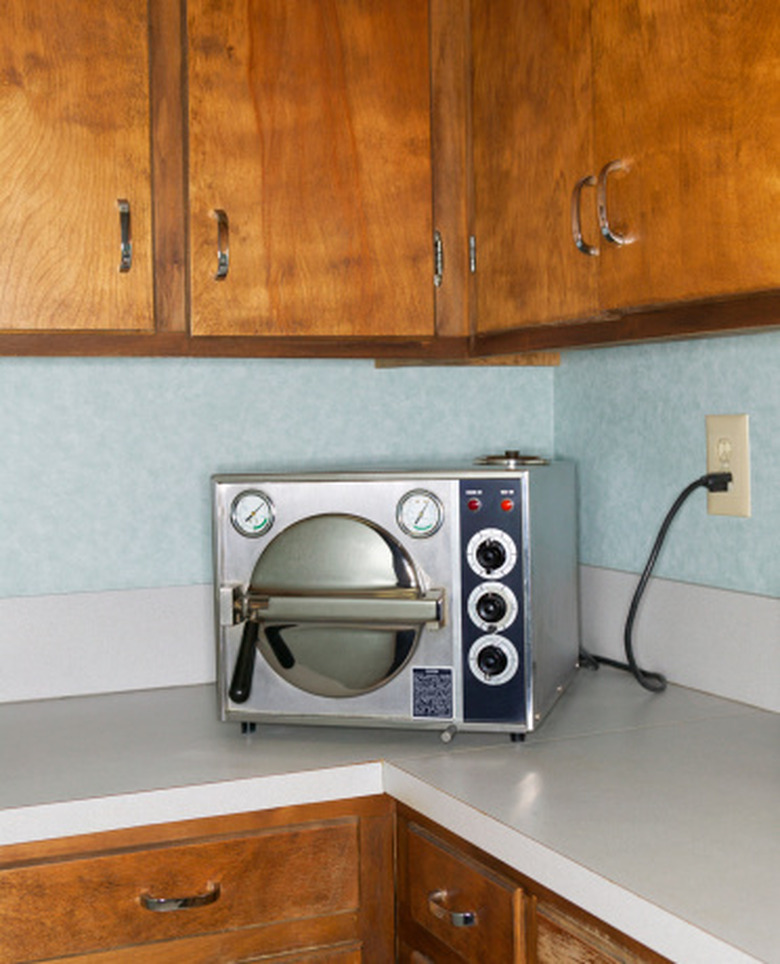Autoclave Picture And Its Uses
An autoclave is a standard piece of equipment in many health care facilities and scientific research laboratories. You may even find autoclaves in tattoo parlors and funeral homes. The device, similar to a pressure cooker, is an important tool for sterilization. There are other autoclave uses, such as for carrying out certain chemical reactions, but these are less common.
What Is an Autoclave?
What Is an Autoclave?
An autoclave is a device for carrying out steam sterilization, often under pressure. Pressurized steam is a much more effective agent for destroying micro-organisms than hot air. When sterilization is a priority, an autoclave is often the method of choice.
Steam is an effective sterilant because it carries enough heat to destabilize and destroy the cell walls or proteins of living material. Air, in contrast, carries less heat and is less reliable in this regard. (For the same reason, a person can withstand a dry sauna at the boiling point of water, 212 degrees F, but would literally cook to death in a steamroom at that same temperature.)
Autoclaves are commonly pressurized. The high pressure helps ensure that steam penetrates to any nooks and crannies that might otherwise be missed. Many autoclaves also have a vacuum capability. The vacuum extracts air that may otherwise form protective air pockets that can prevent full sterilization.
An autoclave, in essence, is a hot, steamy, pressurized box, with enough room to hold the items to be sterilized. There are other types of autoclave used in some industrial settings, but the main use is as a sterilization tool.
Parts of an Autoclave
Parts of an Autoclave
A look at a diagram of an autoclave, available in the references, shows that the device is a more sophisticated operation than simply injecting steam into a a hot box. The working of an autoclave depends on these major parts:
- Chamber: The autoclave box that holds the equipment to be sterilized.
- Controls: An interface panel for users to operate the autoclave.
- Trap: A mechanism to remove air, steam and condensate that has begun to cool.
- Safety valve: A fail-safe valve to prevent excess pressure build-up.
- Steam generator: The water heating unit that creates steam and pressure.
- Cooling system: Prior to discharging wastewater, it is cooled to prevent damage to a facility's sewer system.
- Vacuum system: Present in some autoclaves to remove air prior to injecting steam.
Autoclave Uses
Autoclave Uses
Hospitals and medical offices use autoclaves to sterilize instruments prior to their reuse. Scientists may sterilize their equipment to achieve a high degree of purity in carrying out chemical reactions or growing pure strains of micro-organisms.
Autoclaves may also be used to sterilize waste materials prior to discharge. This not only kills bacteria and viruses, but softens some materials, such as plastics, so that they can be flattened to reduce waste volume.
Industries use autoclaves for specialty applications, such as curing composite materials or growing speciality crystals. The aerospace industry uses enormous autoclaves that can be more than 50 feet long.
Cite This Article
MLA
Sarokin, David. "Autoclave Picture And Its Uses" sciencing.com, https://www.sciencing.com/autoclave-picture-its-uses-8495900/. 13 August 2018.
APA
Sarokin, David. (2018, August 13). Autoclave Picture And Its Uses. sciencing.com. Retrieved from https://www.sciencing.com/autoclave-picture-its-uses-8495900/
Chicago
Sarokin, David. Autoclave Picture And Its Uses last modified August 30, 2022. https://www.sciencing.com/autoclave-picture-its-uses-8495900/
